|
By Donald H. Harrison
 SAN DIEGO—In the eyes of a casual passerby, that was a simple parking lot carnival at Beth Jacob Congregation on Sunday, with pony rides, jump house, a dunk tank, a barbecue area, an ice cone stand, a band, a face painter, numerous crafts stations, and games testing skills at rolling and throwing balls and rings of various sizes. One could also guess the number of M&Ms in a jar. SAN DIEGO—In the eyes of a casual passerby, that was a simple parking lot carnival at Beth Jacob Congregation on Sunday, with pony rides, jump house, a dunk tank, a barbecue area, an ice cone stand, a band, a face painter, numerous crafts stations, and games testing skills at rolling and throwing balls and rings of various sizes. One could also guess the number of M&Ms in a jar.
However, even as there are said to be four ways to read the Torah -- Peshat (plain), Remez (deeper, allegorical), Derash (metaphorical), and Sod (mystical)—one can probe for deeper meaning even in a synagogue carnival.
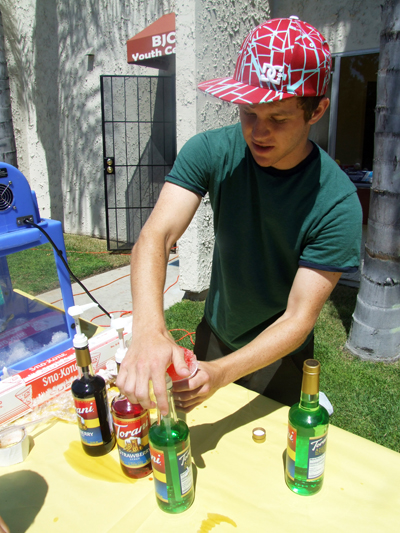
The carnival was filled with Yiddishkeit. The hamburgers and hotdogs, of course, were kosher; so too was the Torani syrup poured over the ice cones by Brian Segal, a member of NCSY (known formerly as National Conference of Synagogue Youth.) The band, Lukshun Kup (Noodle Head), played Jewish melodies.
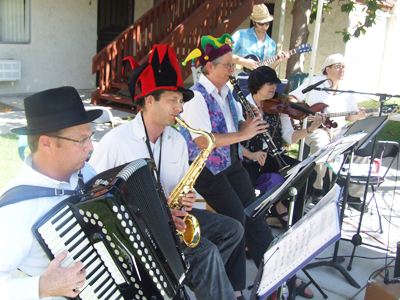
At one point, the carnival's barbecue-chef- in-chief, Yisroel Weiser, told a story over the carnival's public address system about a time when a teacher of a particularly promising student named Ovadiah faced a dilemma: Ovadiah could come to school to learn more Torah and Talmud, or he could honor his father by assisting him at the family's store. What to do?
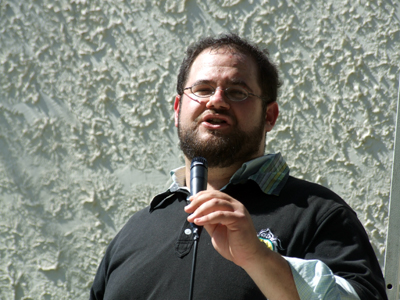
During the time the phenomenal student had attended the yeshiva, his capacity for learning was so great that a succession of teachers felt they had insufficient knowledge to teach him anything more. So he was passed up the chain of mentors, until eventually the rosh yeshiva himself, Rabbi Ezra Attiya, volunteered for the task. Attiya’s awe for the boy’s wisdom grew greater each day that he studied with him.
Then one day, Ovadiah did not appear at the school, nor did he arrive the next day, or the day after that. Fearing the remarkable student was ill, the headmaster made inquiries about where Ovadiah lived. The rabbi walked to a poorer neighborhood of the city. The father told the headmaster that as brilliant as Ovadiah may be, the boy was needed to work at the store. They were a poor family, immigrants to Jerusalem from Basra, Iraq; all hands were needed.
Go to the top of right column
|
|
The next morning, Ovadiah awakened early and went ahead of his father to get the store ready for the day’s business. But when
the father arrived, he found that the rosh yeshiva, wearing an apron, was standing behind the counter. Rabbi Attiya explained to the father that Ovadiah was such a remarkable scholar that such a mind must not be denied to Judaism. So, therefore, he had exchanged places with him.
The father, amazed, quickly agreed to find another employee so that Ovadiah could continue to attend the yeshiva and Rabbi Attiya could be there to teach him.
The student’s full name, added Weiser, was Ovadiah Yosef, and today he is the chief Sephardic rabbi in Israel and the spiritual leader of the Shas movement. The story can be found in many reference works about Rabbi Yosef, including on Wikipedia.
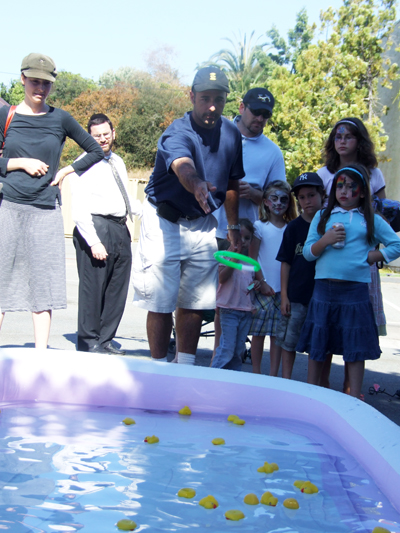
Rand Levin, president of Beth Jacob Congregation, noted that the carnival came just days after the period of mourning associated with Tisha B’Av (which commemorates the destruction of the Temple in Jerusalem and other tragedies in Jewish history).
Although game tickets were sold to “cover the costs,” Levin said, the carnival was designed not to raise funds but simply to break even and provide a joyous social outing, as well as Jewish learning opportunities, for the families of the Orthodox congregation. He credited the congregation’s youth director, Rabbi Adam Simon, for suggesting and following through on the idea.
Goldfish, which could be won by tossing a ring over a floating toy duck, and ponies which could conduct children around the parking lot, were among the top carnival attractions. My grandson Shor, 8, with the help of his father Shahar, won one goldfish, which he promptly named "Nemo" after the lost fish in the animated movie, Finding Nemo. Another grandson, Sky, 2, said over and over again he wanted to ride a pony, but changed his mind as he reached the head of the line.
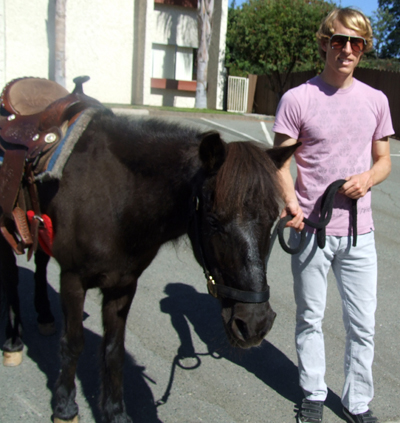
Pat McComb, owner of Barnyard Cuties of Escondido, the firm that brought two ponies to the Beth Jacob parking lot told me their names were " Misty" and "Shiloh."
“Shiloh?” I asked. “Why did you choose that name?”
“It sounded like a really nice name,” the owner responded as her son Ryan held the reins of the animal in question. “I liked it better than ‘Dark Star,’” which was the 23-year-old pony’s original name.
Rabbi Simcha Weiser happened to walk by just then.
I inquired of the Soille San Diego Hebrew Day School headmaster about the name “Shiloh.”
Most people know "Shiloh" as the name of the town in Tennessee where a great Civil War battle was fought, Rabbi Weiser responded. However, “Shiloh” also was a biblical city, mentioned in the Book of Joshua, as "the place where the Mishkan—the portable Tabernacle—was located.” The Talmud said the Mishkan was there “for the longest period of time before the Temple was built in Jerusalem,” Rabbi Weiser added.
So on a day celebrating the end of the period of mourning for the destruction of the Temple, a pony’s name reminded us of the time before the Temple ever was built. And this coincidence occurred on the parking lot of a synagogue located in the Diaspora.
A footnote: there were 1,743 M&Ms in the jar.
|
|

